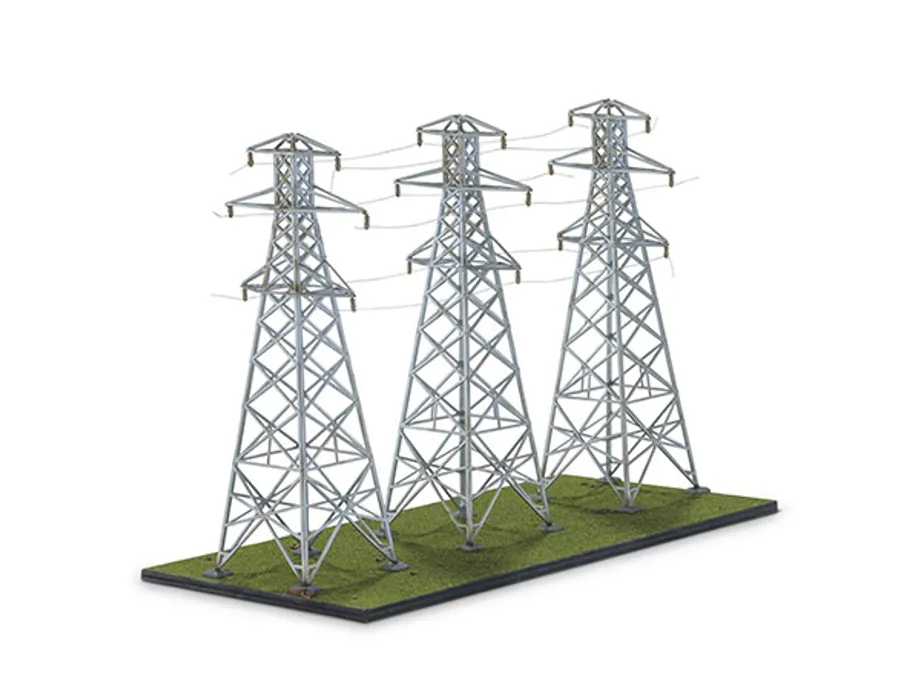Power transmission and distribution
Electric power transmission is the bulk transfer of electrical energy from generating power plants to electrical substations located near demand centres.
This is distinct from the local wiring between high-voltage substations and customers, which is typically referred to as electric power distribution.
An electric power distribution system is the final stage in the delivery of electric power. Distribution substations connect to the transmission system and lower the transmission voltage to a medium voltage ranging between 2kV and 35kV with the use of transformers.
Model pylon
This electricity pylon model, constructed by Paul Bicheno, represents a typical structure used to support an overhead power line. Usually a steel lattice tower, they are used in high voltage AC and DC systems and come in a wide variety of shapes and sizes.
There are four major categories of transmission towers: suspension typically used for straight lines of transmission; tension (angle) used at locations where line direction changes by more than five degrees; transposition used to transpose the conductors of a 3-phase line; and special used for long spans such as river and lake crossings.

